Digital Camera World Verdict
The general editing controls available in Exposure X7 are most suited to beginners and enthusiasts, although more advanced users can also achieve excellent results using the software. The lack of HDR and the ability to merge panoramic images is disappointing and some controls and features can be fiddly, but its main strength is its array of analog effects overlays, LUTs, borders, light leaks and more. With perpetual license options starting at $89 for upgrades and $129 for the full version, it’s a competitively priced option considering what it does have to offer.
Pros
- +
Single seamless workspace
- +
100s of presets are available
- +
Standalone and plug-in operation
- +
Perpetual license
Cons
- -
No HDR or panoramic merge
- -
Localised adjustments can fiddly
- -
Can't combine images
Why you can trust Digital Camera World
Exposure Software has been around for a long time, but it was previously called Alien Skin and was well known for its popular Photoshop plugins including Eye Candy, which is still going strong today. Since 2005, the company transformed the Exposure plugin into standalone editing software called Exposure X, which is essentially an analog effects tool and all-round image editor combined.
Exposure X7 is the latest version and, like previous incarnations, it works as a standalone program or as a plugin for both Lightroom and Photoshop. But while this allows you to enjoy the benefits of the software within an existing Adobe-based workflow, Exposure X7 with its interesting, and in some cases unique features, is ideal to use as standalone editing software, with editing controls for global and localised adjustments alongside presets, LUTs, creative overlays, a wide range of preset analog film effects and a powerful yet easy-to-use masking tool – just a few of the features it has to offer.
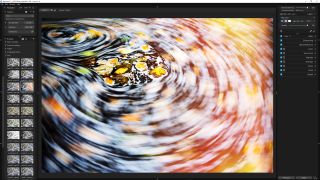
Over the last decade or so many software developers have moved to a subscription-based model where, as a consumer, you might feel that you’re constantly having to pay fees. But thanks to a perpetual license, this Mac and Windows compatible software can be purchased for just $129, $89 for an upgrade from any previous version or $149 for the Exposure X7 Bundle that also includes the Snap Art and Blow Up plugins, representing a substantial saving overall.
Key features
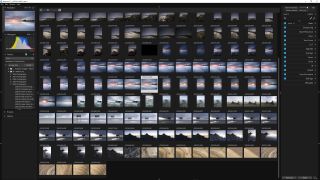
Exposure X7 Provides an easy-to-use image viewer where images are viewed from their location after being ‘bookmarked’ in the file tree on the left. This is a much better approach than showing all folders on your computer because it keeps things tidy and images are easier to find, rate, organise and edit.
In terms of editing controls, X7 provides almost everything you’d need and expect from raw processing software, and even the Auto options within some sections such as Basic (adjustments) can work well. While advanced users of the software wouldn’t require Auto adjustments, this function provides a quick edit for beginners who can then see how the software has handled image processing.
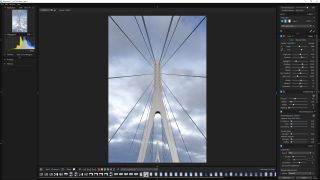
Beyond standard raw processing controls and global adjustments, there are localised adjustments that are applied as masks that can be targeted to parts of the image based on colour, luminance and saturation. The graduated filters are fiddly to use and would perhaps be better as dedicated tools rather than masks, but you do get used to how they work – and, being masks, they can be used on adjustment layers for blending in any of Exposure X7’s adjustments or preset effects. Speaking of presets, the hundreds of presets included provide a huge range of effects that can be applied at the click of a button.
In this latest version of Exposure, there are several new features including a masking tool that makes it incredibly easy to select elements within images thanks to an intelligent algorithm; the crop and transform panels have been combined along with the addition of compositional guides within the crop tool overlay; different workspaces are available for performing various tasks as well as the ability to create custom workspaces and save your own presets; then there’s improved colour with DNG files and defective pixel removal for raw files.
Interface and usability
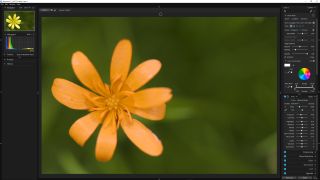
The Exposure X7 interface follows what you might call the standard editing software layout with image folders and presets on the left, a main image window in the centre, thumbnails along the bottom (or in the main window area) and editing controls on the righthand side.
The software is generally easy to use with image viewing and editing taking place in the same interface area, so no moving around from one tab to another. This certainly keeps things nice and simple, and while you may be thinking it would be cumbersome viewing images and editing them in the same space, it works well because you can easily change the viewing mode of the main image area. Not to mention when viewing and working on a single image, a filmstrip appears at the bottom of the interface so you’re never too far from the image folder you’re working from.

In terms of the main adjustments, these are tucked away neatly in panels on the righthand side of the interface and can be expanded to show their controls or left minimised to keep the interface looking neat, tidy and less intimidating for beginners. The controls available are easy to use and provide the level of control required for editing raw files, carrying out out everyday enhancements like tone and color adjustments, retouching and sharpening. This is also where you’ll find Exposure X7’s analog effects tools and overlays, including bokeh blur, vignettes, light leaks, LUTs and more.
All of Exposure X7’s adjustments and effects are non-destructive when you’re using it in standalone mode. You can create any number of virtual copies of an image to try out different looks, and you can even ‘audition’ up to six presets at a time to see and select the one you prefer.
Quality of results
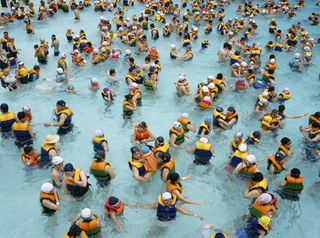
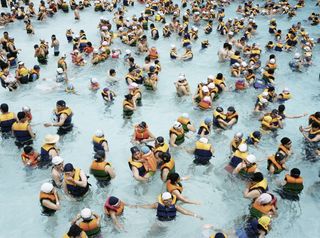
The image quality possible from Exposure X7 can’t be faulted when using the manual controls, though it doesn't always match the detail and noise control of Lightroom and Capture One when you're working with raw files. Some controls behave slightly differently to those i Adobe Lightroom, for instance, but that doesn’t have a negative effect on editing. It does, however, mean that if you’re used to other software, you’ll need to experiment with the sliders in the Basic panel to see how they function and identify those that behave differently from what you’re used to.
For regular raw processing and image enhancement, Exposure X7 performs well enough, but its real strength is its analog tools and presets, which offer a range of effects wider than those you can achieve in Lightroom or Capture One, and are only equalled by ON1 Photo RAW.
Like any software offering presets, some are better and indeed more useful than others and with so many available it’s worth favoriting the ones you use the most to make them easier to locate in the future.
Verdict
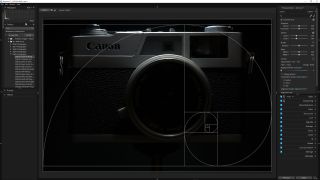
The regular editing controls available in Exposure X7 are most suited to beginners and enthusiasts, but the presets provide a wide range of evocative one-click analog effects with control over opacity and cover everything from basic adjustments to film-style effects and more.
Overall, Exposure X7 is impressive software that delivers most, but not all of the features and functionality required by photographers; the lack of HDR and the ability to merge panoramic images is a shame, so Exposure a step behind competitors if these are important features for you.
Exposure X7 is a little outside the norm for photo editors. It’s not designed solely as a photo cataloguing and editing tool, but also as an easily customized source of photo looks and analog film effects. You can download a fully-functioning 30-day trial from the Exposure Software website to find out of Exposure X7's unique approach to editing and its evocative film effects are what you're looking for.
Read more:
• Best laptops for photo editing
• Best monitors for photographers
• Best portable hard drives
James Abbott is a landscape and portrait photographer based in Cambridge. He’s also an experienced photography journalist specializing in camera skills and Photoshop techniques. He is also a CAA-approved drone pilot and professional aerial photographer.

